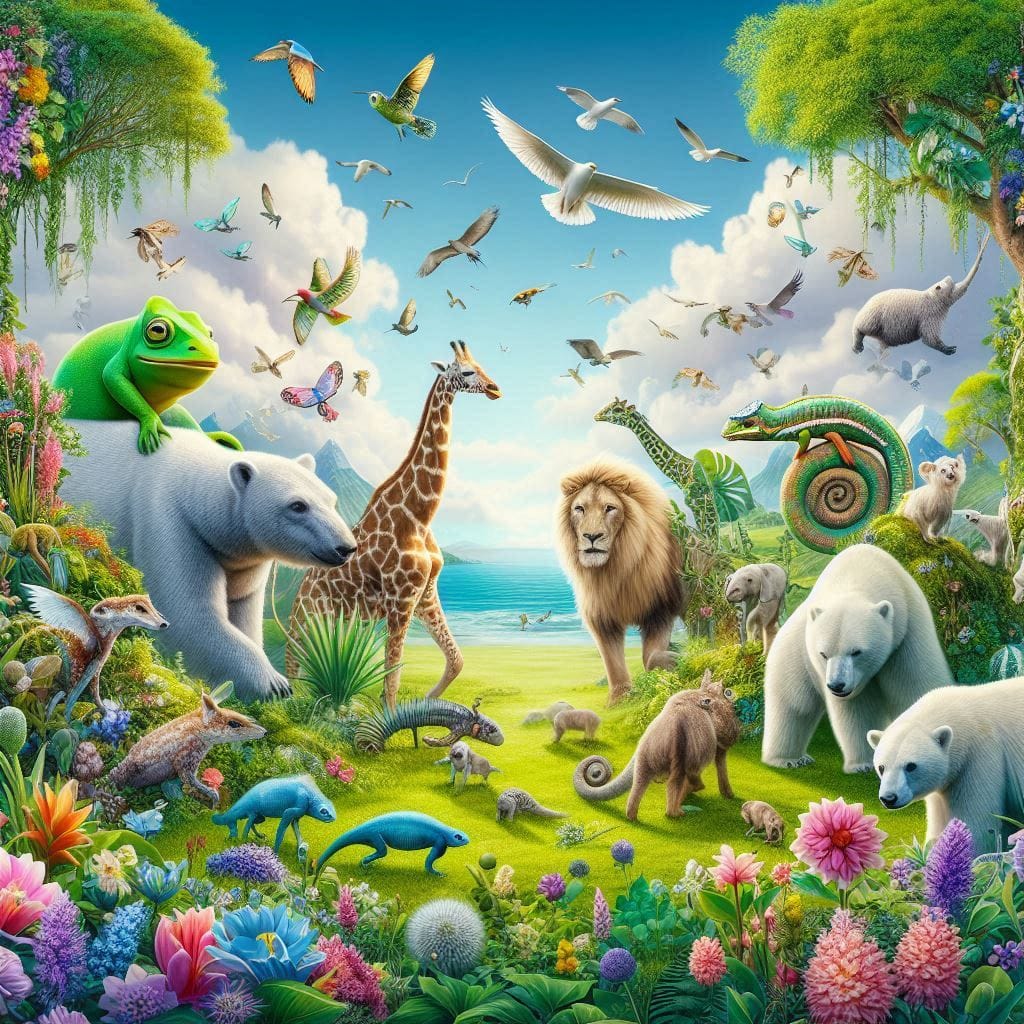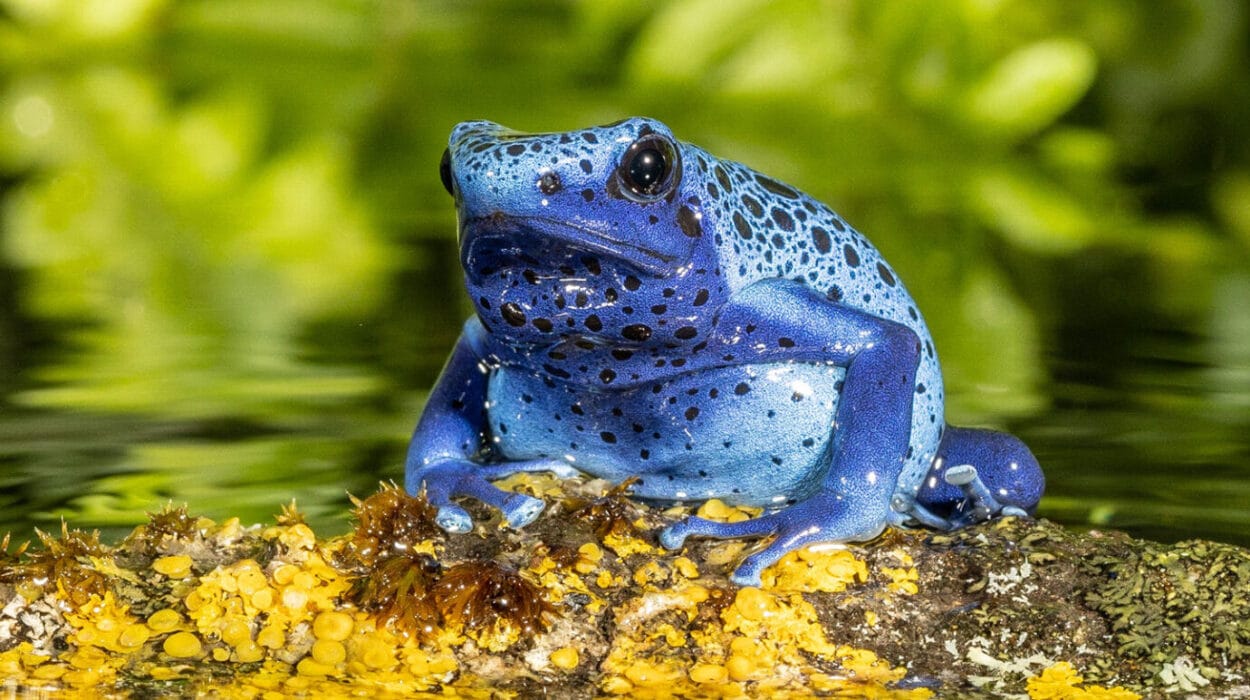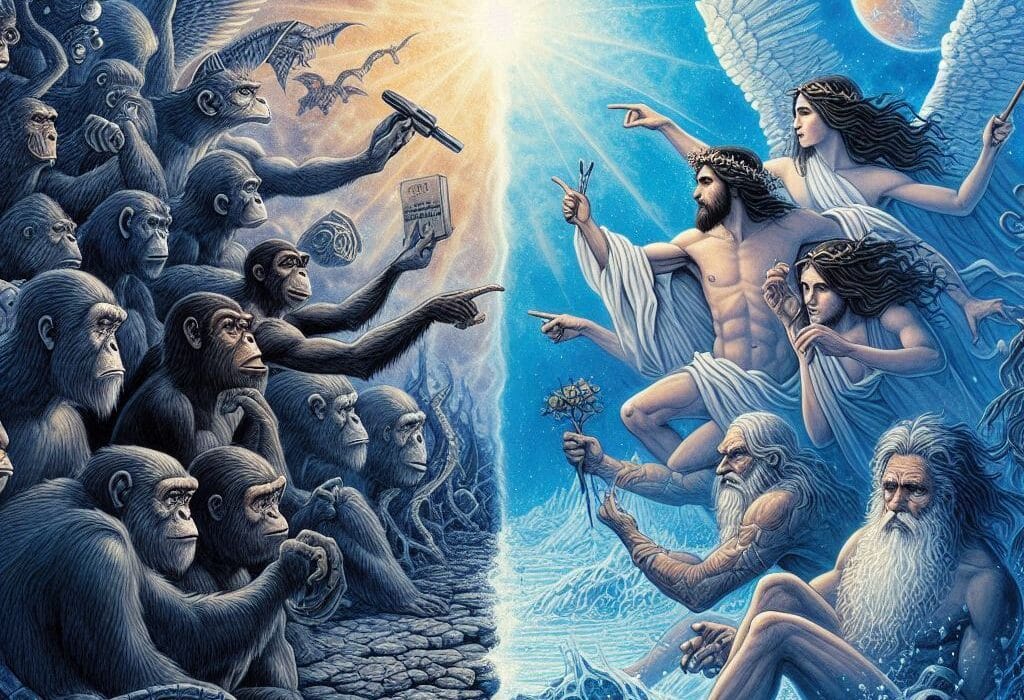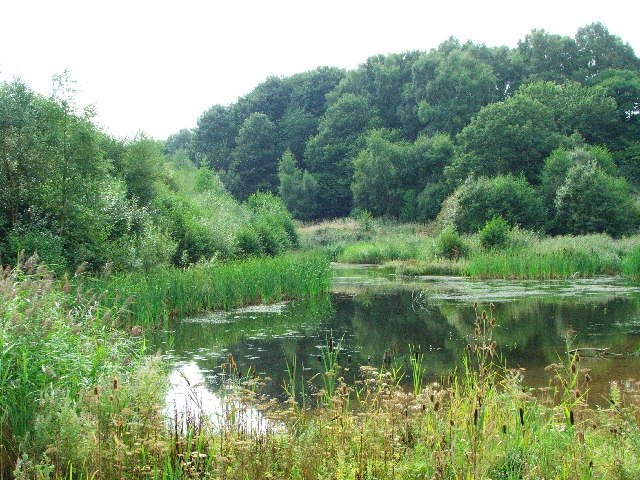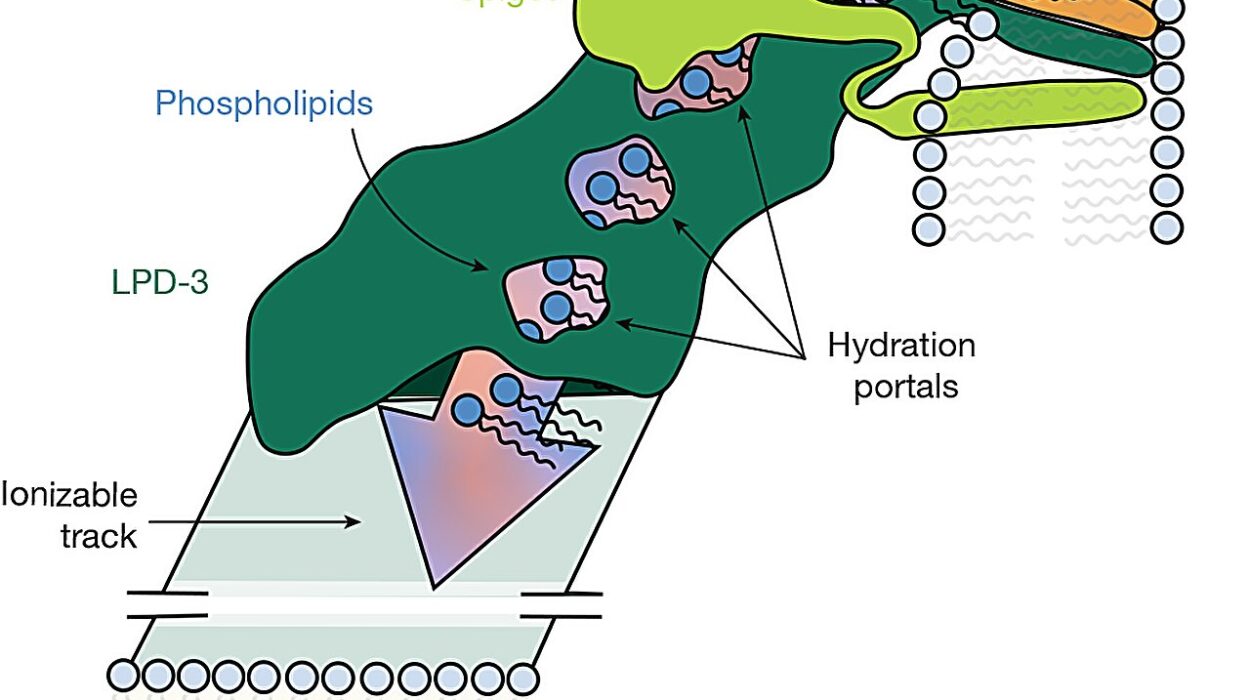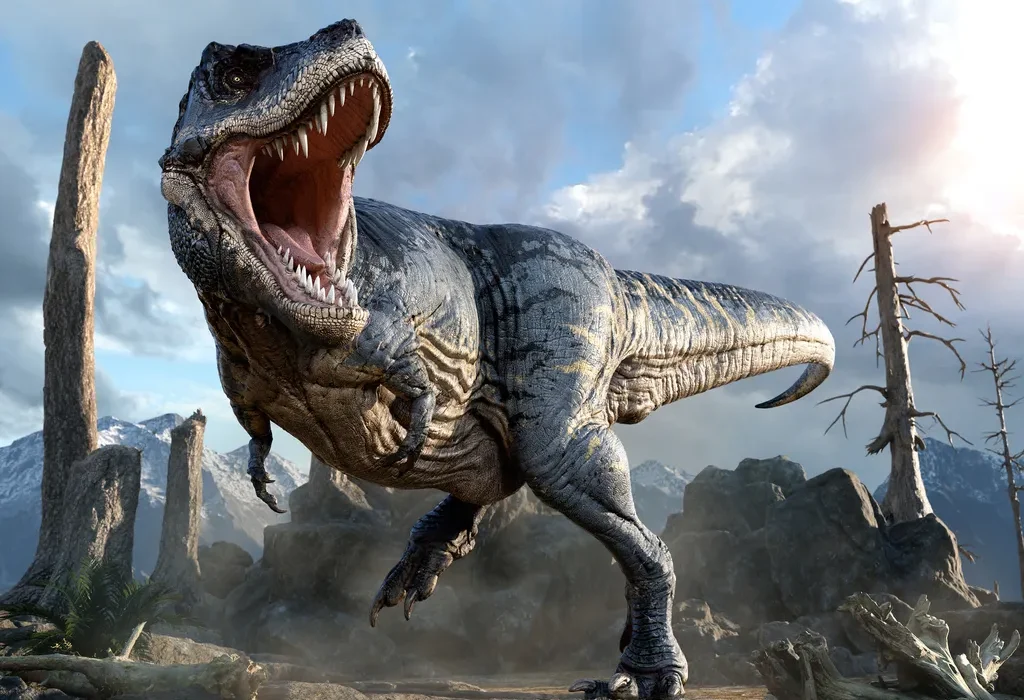The Earth is not a static planet. From the day life first stirred in its ancient oceans to the sprawling jungles, polar deserts, and coral reefs of today, everything has been in constant motion. Continents drift. Climates shift. Volcanoes erupt. Oceans rise and fall. In this relentless dance of transformation, the animals that populate our world have faced one immutable truth: adapt, or perish.
But how does adaptation happen? How can a cold-blooded reptile survive the frigid mountain tops? How does a fish come to breathe air and walk on land? How do flightless birds thrive in open plains, or whales return to the sea after millions of years on land? The answer lies in one of nature’s most powerful forces—evolution.
Through evolution, animals do not merely change; they are sculpted by their environment over generations. The process may be invisible to the naked eye in a single lifetime, but over thousands or millions of years, it transforms creatures into marvels of survival. Evolution is not a race or a competition—it is a whisper, passed from parent to offspring, a long conversation between life and the world it inhabits.
The Genetic Canvas of Life
Every adaptation begins in the mysterious world of genes—the molecules of DNA that carry the blueprints for building and maintaining an organism. Within these coiled strands are instructions that determine how animals grow, reproduce, behave, and respond to their environment. But DNA is not immutable. It can change. Mutations, often caused by copying errors during cell division, cosmic rays, or chemical exposure, create new variations in genes.
Most mutations are neutral or harmful, but once in a while, a change emerges that offers an advantage. A rabbit might be born with slightly larger ears, allowing it to hear predators better. A lizard might develop longer toes, improving its grip on rocky surfaces. These differences, though often subtle, can become significant if they help the animal survive and reproduce in its environment.
Over time, through natural selection, these beneficial traits become more common in a population. Nature “selects” the individuals better suited for their environment, allowing them to pass on their genes, while others struggle and fade away. It is a process both elegant and brutal—indifferent to fairness but astoundingly effective in shaping life.
Camouflage: Hiding in Plain Sight
Imagine walking through a forest, the leaves rustling gently, sunlight dappling the ground. You see nothing unusual—until a leaf flutters, and suddenly the leaf has legs. It’s not a leaf at all, but a katydid or a stick insect, masterfully disguised.
Camouflage is among the most visually stunning adaptations in the animal kingdom. It allows prey to avoid predators, and predators to sneak up on prey. This form of adaptation doesn’t involve hiding in burrows or fleeing—it is about becoming invisible by blending in.
Chameleons are famous for changing color, not just to match backgrounds but also to communicate. Arctic foxes turn white in winter to vanish against the snow. Tigers, despite their bright orange fur, blend perfectly into sun-dappled jungle terrain because many prey species are colorblind and see only in shades of green and gray.
This kind of adaptation takes generations to perfect. A slightly lighter-furred animal in a snowy environment may be more likely to escape detection. Over time, lighter fur becomes the norm. In this way, environmental pressures create masterpieces of mimicry.
Physical Transformations: Survival in Form
Adaptation often involves dramatic changes to an animal’s physical body. Over eons, limbs can stretch into wings, teeth can flatten into grinding molars, eyes can shift to different positions on the head. These changes are never intentional. They are the result of countless tiny genetic variations, passed down and filtered through the sieve of survival.
Consider the giraffe. Its long neck is not just an iconic feature—it’s a survival tool. In the African savannas, where competition for food is fierce, giraffes can reach leaves that others cannot. But the neck must be supported by a strong heart and an unusual circulatory system to pump blood all the way to the brain. The entire body has co-evolved to accommodate this one key adaptation.
Or take the polar bear. Descended from brown bears just a few hundred thousand years ago, polar bears developed white fur, a thick layer of blubber, and specialized paws that help them grip ice and swim vast distances. Their sense of smell became so acute they can detect seals beneath meters of snow and ice.
These are not one-time transformations. They are mosaics built piece by piece, with each small improvement giving the bearer just enough of an edge to thrive. Over time, these edges accumulate, and the species transforms.
Behavioral Adaptations: The Evolution of Action
Not all adaptations are visible. Many occur in behavior—instincts, patterns, or learned responses that increase an animal’s chances of survival. These too are subject to evolution. If a certain behavior helps an animal live longer and raise more offspring, it can spread through the population just like a physical trait.
Bird migration is one example. Many species travel thousands of miles to find food and suitable climates. The routes, timing, and even the ability to navigate using Earth’s magnetic field are all products of evolutionary fine-tuning.
Some fish build elaborate nests. Some insects mimic the behavior of more dangerous species. Prairie dogs have developed alarm calls with different tones for different predators, allowing their communities to respond appropriately. Elephants grieve, whales sing, and chimpanzees learn to use tools. These behaviors are shaped not just by genes but by culture, memory, and learning—fascinating frontiers where biology and social life intertwine.
Behavioral adaptations often evolve in concert with changes in environment. As predators become more efficient, prey evolve more complex escape behaviors. As climates change, animals adjust their breeding seasons, hunting patterns, and social structures. These changes don’t occur overnight—but across generations, they shift the very essence of how animals live.
Environmental Pressures: The Sculptors of Adaptation
To understand how animals adapt, we must understand what pressures shape them. These environmental pressures can be physical, such as temperature, terrain, or availability of water. They can also be biological—competition for food, risk of predation, or diseases.
Deserts, for example, pose immense challenges: extreme heat, scarce water, and limited food. Animals like the fennec fox have evolved large ears to dissipate heat and thick fur on their feet to walk on hot sand. Camels can go days without water, using fat stored in their humps for energy and producing concentrated urine to conserve fluids.
In the ocean’s deep, lightless zones, other pressures dominate: cold, pressure, and darkness. Creatures there have evolved bioluminescence, enormous mouths, and slow metabolisms. The anglerfish uses a glowing lure to attract prey in total blackness.
On mountaintops, the air is thin, cold, and often lacking food. Yet animals like the snow leopard and Himalayan tahr survive there, with powerful lungs, dense fur, and a physiology fine-tuned for high altitudes.
Even urban environments exert evolutionary pressure. Pigeons, rats, and cockroaches are adapting rapidly to human cities. In just a few generations, some birds have evolved shorter wings to better maneuver around buildings, while others have altered their songs to compete with urban noise.
Coevolution: The Arms Race of Life
Some of the most remarkable adaptations arise when species evolve in direct response to each other—a phenomenon known as coevolution. It’s a dynamic, reciprocal process, like a game of chess played out over millions of years.
Predators and prey are classic coevolutionary players. As cheetahs became faster, gazelles evolved to be more agile. As snakes developed venom, some prey evolved resistance. Each adaptation provokes a counter-adaptation, a biological arms race with no final victor.
Pollinators and plants also coevolve. The long tongue of a hummingbird matches the deep shape of certain flowers, both adapting to maximize survival and reproductive success. Orchids may develop scents and colors to attract specific insects, and those insects, in turn, evolve to harvest nectar efficiently.
Parasitic relationships also drive adaptation. Cuckoos, which lay their eggs in other birds’ nests, have evolved egg coloration that mimics host eggs. The host birds, in turn, evolve the ability to recognize and reject impostor eggs.
Coevolution weaves species together into intricate networks of survival. It reminds us that no animal exists in isolation; evolution is a conversation across species, a balancing act of give and take that ties life forms into one great tapestry.
Speciation: The Birth of New Species
As adaptations accumulate, populations may begin to diverge. When a group of animals becomes isolated—by geography, behavior, or genetics—it can follow its own evolutionary path. Over time, these separate paths can lead to the formation of entirely new species.
This process, called speciation, is how evolution gives rise to the incredible diversity of life on Earth. When Galápagos finches arrived on different islands, they faced different environments. Some islands had hard seeds; others had soft fruit or insects. Over time, their beaks evolved accordingly. What began as one species became many, each uniquely suited to its niche.
Speciation can be explosive, as in adaptive radiations where one species gives rise to dozens. It can also be gradual and quiet, unfolding over eons. The key is reproductive isolation—once two populations can no longer interbreed successfully, they are considered distinct species.
This process doesn’t happen just in remote islands or ancient times. It is ongoing. We can witness it in the genomes of rapidly evolving species like insects, birds, or fish. Evolution never stops. It is the quiet heartbeat of life.
Extinction and Evolution: The Price of Failure
For every success story in evolution, there are countless failures. Over 99% of all species that have ever lived are now extinct. Adaptation is not guaranteed. When environments change too quickly, or when organisms face challenges they cannot meet, extinction follows.
The fossil record tells stories of tragedy and resilience. The dinosaurs, once rulers of Earth, vanished after a cataclysmic asteroid impact. The mammoths succumbed to changing climates and human hunting. The dodo was driven to extinction by invasive species and habitat loss.
Yet extinction also clears the way for new life. After each mass extinction event, evolution rebounds. New niches open. New adaptations arise. Mammals flourished after the dinosaurs. Birds emerged from their ancestors. Evolution is relentless, reshaping life again and again from the ashes of loss.
In today’s world, human activity is becoming a new evolutionary force. Climate change, habitat destruction, pollution, and overhunting are pushing many species to the brink. But even now, some animals are adapting. Urban foxes behave differently than their rural counterparts. Fish are evolving resistance to pollution. Insects adapt rapidly to pesticides.
Still, the question remains: Can adaptation keep pace with the speed of human-induced change? Evolution is powerful—but not instant. Conservation is essential to give life the time it needs to adapt.
The Beauty and Brilliance of Evolutionary Adaptation
To watch an octopus disappear into coral by changing the texture and color of its skin is to witness evolution’s artistry. To marvel at a hummingbird in mid-hover, or a snowshoe hare turning white with the seasons, is to see the silent legacy of millions of years of trial and error, survival and loss.
Adaptation is not about perfection. It is about possibility. It is about making the best of what is available, about transforming the ordinary into the extraordinary. It is about genes and chance, but also about resilience and creativity.
In every beak, paw, feather, or fin lies a story—of ancestors who survived by a thread, of mutations that altered fate, of environments that demanded change. Evolution is not just a theory of biology—it is the story of life itself, unfolding every moment, all around us.
Our Place in the Evolutionary Tapestry
Humans, too, are a product of adaptation. We walk upright, sweat to cool ourselves, and have large brains capable of abstract thought. Our thumbs grasp tools. Our language connects us across generations. Our societies share knowledge faster than genes can mutate. Culture and biology intertwine in our species in unique ways.
But we are not separate from the animal kingdom. Our ancestors were once tree-dwellers. Our genome is 98% identical to that of chimpanzees. We are not the pinnacle of evolution—we are a branch on a vast, ancient tree, shaped by the same forces that shaped every other creature.
Understanding adaptation helps us appreciate not just the diversity of life, but its fragility. Evolution is powerful, but it is not invincible. Species can be pushed too far, too fast. Protecting nature means respecting the slow, majestic process by which life adapts and endures.
In every creature we encounter—be it a housefly or a humpback whale—we glimpse the quiet triumph of adaptation. And in knowing this, we see the miracle of life more clearly. Not just its forms and colors, but its deep, enduring struggle to survive, to change, and to flourish.
